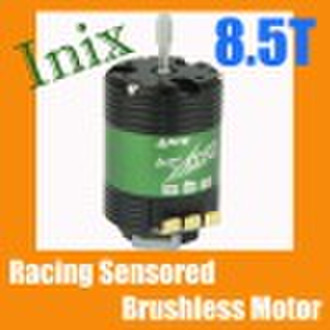Catalog
-
Catalog
- Agriculture
- Apparel
- Automobiles & Motorcycles
- Beauty & Personal Care
- Business Services
- Chemicals
- Construction & Real Estate
- Consumer Electronics
- Electrical Equipment & Supplies
- Electronic Components & Supplies
- Energy
- Environment
- Excess Inventory
- Fashion Accessories
- Food & Beverage
- Furniture
- Gifts & Crafts
- Hardware
- Health & Medical
- Home & Garden
- Home Appliances
- Lights & Lighting
- Luggage, Bags & Cases
- Machinery, Hardware & Tools
- Measurement & Analysis Instruments
- Mechanical Parts & Fabrication Services
- Minerals & Metallurgy
- Office & School Supplies
- Packaging & Printing
- Rubber & Plastics
- Security & Protection
- Service Equipment
- Shoes & Accessories
- Sports & Entertainment
- Telecommunications
- Textiles & Leather Products
- Timepieces, Jewelry, Eyewear
- Tools
- Toys & Hobbies
- Transportation
Filters
Search
540 Sensored Brushless Motor for RC Car 1:10 1:12
original price: 43,00 USD
Shenzhen, China

Yan Lee
Contact person
Basic Information
| Place of Origin | Guangdong China (Mainland) |
|---|---|
| Brand Name | Imax |
| Model Number | 8.5T |
| Type | Car |
| Power | Battery |
| Material | Other |
| Radio Control Style | RC Hobby |
1)540 Sensored Brushless Motor for RC Car 1:10 1:12 2)Turns :8.5T 3)Shaft:3.17mm 4) High quality and competitive price Introduction The INIX RACING Sensored Electronic Speed Control (ESC) is specifically designed for operating sensored or sensorless brushless motors. Featuring low on-resistance, enhanced throttle response and strong brakes, this ESC has enough features to satisfy the most demanding driver. The preinstalled high-airflow fan attached to the ESC heat sink keeps it cool and performing to the peak of its ability. In order to maintain high continuous current draw in low temperature conditions, the INIX RACING ESC uses very high-quality electronics and the best MOSFET transistors available. These do not limit the functions of the ESC as you can easily use the Quick Programming Card to make changes to any desired setting. Using the Quick Programming Card, adjustments to the ESC can be made quickly and simply. AI System - When power wires on the ESC are connected with the battery packs, the ESC can automatically identify the motor type (Sensored or Sensorless) via indicating LED. If the ESC works at the status of Sensored, remove the Sensor wire, the ESC can be automatically change to the status of Sensorless Connecting the ESC to your Receiver Your ESC plugs into the throttle channel of your receiver. This is usually channel 2. Your ESC provides 5 volts to the receiver to power the receiver and the steering servo. No separate receiver battery is needed to power the radio system. INIX RACING ESC receiver plugs are made to be used with any receiver, so you will need to make sure the polarity is correct. The signal wire is white, the positive wire is red, and the negative is black. Some radio systems use orange for signal, red for positive and brown for negative color scheme. Check your receiver documentation for correct connection polarity if it’s not marked. (Most receivers use negative to the outside of the case and signal towards the inside of the case.) Connect the ESC and Sensored / Sensorless Motor Caution: DO NOT CUT any part of the wire length from any other motor, regardless of brand or type. In most cases, only the last 1/4 inch or so of most motor wires is able to be soldered. If they are clipped shorter you may not be able to solder the remaining portion of the wire and the motor will not run properly, if at all. If the motor is supplied with connectors you do not want to use, simply unsolder the original motor connectors from the wires - do not cut them off. A) Sensored Brushless motor wiring When using brushless motor with Hall Sensor, it is necessary to connect the sensor cable to the “SENSOR” socket on the ESC, and ESC can automatically identify the motor type (sensored or sensorless) by detecting the signal coming from the SENSOR socket. Caution: For sensored brushless motor, the #A, #B, #C wires of the ESC MUST be connected with the motor wire #A, #B, #C respectively. Do not change the wires sequence optionally! A) Sensorless Brushless motor wiring When using brushless motor without Hall Sensor, the #A, #B, #C wires of the ESC can be connected with the motor wires freely (without any sequence). If the motor runs in the opposite direction, please swap any two wire connections. Note: For SENSORLESS motor, you can also set the throttle channel of your transmitter to the “REVERSE” direction, and then the motor will run oppositely. And please calibrate the throttle range again after changing the direction of throttle channel. Please keep in mind that this method is ONLY available for SENSORLESS motor ……………………………………………………………………………… Normal
Delivery terms and packaging
Packaging Detail: carton packing Delivery Detail: 5-9 Days after your payment
Port: SZ/HK
Payment term
Telegraphic transfer
Western Union
-
Payment Methods
We accept:









